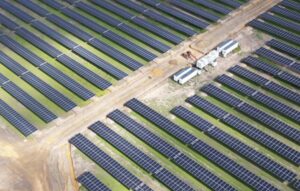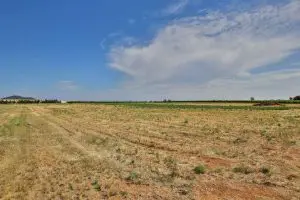Do New South Wales consumers realise how lucky they are? Hidden in the deep complexity of the contracts agreed by the state and federal governments and the developers for three huge big battery projects announced on Wednesday is the realisation that the state could effectively get them for free.
The nature of the contracts has led to calls from former state energy minister Matt Kean for Labor to end talks about the possible extension of the Eraring coal fired generator, the country’s biggest, beyond its planned closure date of August, 2025, and secure more big battery projects instead.
The tenders announced on Wednesday were held under the hybrid NSW and federal Capacity Investment Schemes, and what makes them interesting is that they effectively write a floor price for the winning projects and are deliberately designed to provide little or no exposure to NSW consumers.
The winning projects are a 500MW, two hour battery to be built at Liddell by AGL, a 415MW, four hour battery proposed by Akaysha Energy at Orana, and a 65MW, two battery in Smithfield by Iberdrola, and three virtual power plants to be put together by Enel X.
These floor prices – represented by complex financial instruments known as Long Term Energy Service Agreements and annual annuities – are designed to do one thing: Provide enough certainty for the project developers to go out and lock in some lower cost debt financing.
The project developers will need to earn a lot more money from their battery storage assets to make the investments worthwhile, which is what they intend to do. It’s unlikely they will ever have to resort to the support mechanisms that have been offered to them.
These mechanisms are essentially a back stop, designed to offer the very minimum needed to get a project across the line. There is even provide a clawback for the state if the project owners do exercise the LTESAs or annuities, and make more money at a later date.
Which means that the battery storage projects, collectively worth around $1.8 billion, could be effectively subsidy free and will cost NSW consumers very little, or quite possibly, nothing at all.
“Under some future market scenarios, NSW energy consumers will pay nothing for these batteries,” says Brad Hopkins, the head of AEMO Services, says. “There will be no subsidies.”
Matt Kean, the former NSW energy minister under the state Coalition government, is now urging the state to double up on battery storage, and end speculation about an extension of the closure to the Eraring coal fired power station – dubbed “Coalkeeper 2.0” – which he says would be much more expensive.
“This is vindication of the Coalition’s energy policy,” he told RenewEconomy in a rare foray back into energy market policy debate. “This is supported by Labor, but there is no need to extend Eraring at a massive cost to taxpayers when investors are prepare d to build new dispatchable capacity by 2025.
“Labor should reconsider Coalkeeper and run another capacity auction so that NSW can benefit from some of the cheapest, cleanest and most reliable energy in the world.”
AEMO Services’ Hopkins says the products are deliberately designed to protect the projects from any signifiant downsides, but provide no restriction on the way the batteries can operate – apart from the requirement to deliver firm capacity when supply is at risk.
In Western Australia, by contrast, the state has agreed to pay some of the new big battery projects, such as Neoen’s giant Collie battery, around $110 million a year to provide specific services – soaking up excess solar in the middle of the day and shifting it to the evening peak.
“We are not requiring battery projects to operate in a particularly way – that is when they start charging more money,” Hopkins says.
“Its a top up payment in case electricity markets don’t provide enough revenue. It is called a “missing money” payment – we believe we should minimise the subsidies that consumes will pay.
“We think that the electricity markets will deliver the best outcomes. They are changing quickly, and new services are being introduced, and we don’t want to stop that innovation by tying up batteries and make them work in a particular way.”
Akaysha Energy, one of the winning bidders for its Orana battery – which will be the biggest four hour battery in the country to date – agrees. Its head of strategy Paul Curnow says these contracts protect the investment from the worst downside risk.
“It also bridges a pricing gap from two hours storage to four hours storage, something that utilities have not quite got their minds and calculators around,” Curnow says.
“If you go to OTC (over the counter) market and talk to the big Gentailers, they re not fully there yet on the value there of four hours storage. What we like about these contracts is that it’s a bridge to that. It’s more of an insurance product. not a subsidy.”
What could go wrong? Hopkins says electricity prices and volatility could both stay very low, which will require those LTESA and annuity contracts to be accessed, but in the circumstances of very low prices, that would not be a bad thing.
And the other potential fly in the ointment is a dramatic change in the way that energy markets are shaped as a result of government intervention. These contracts effectively provide some insurance against that.
In the end Kean may get his wish, with the federal energy minister Chris Bowen announcing a significant ramp up of the Capacity Investment Scheme to now include 9 GW of dispatchable capacity, up from 6 GW, and another 23 GW of wind and solar generation – all within the next four years.
See: Bowen dumps RET for 32 GW of auctions in massive policy shift to supercharge renewables
And: Akaysha says four-hour batteries will be “new normal” after first gigawatt scale facility
And: The eye-watering payments being made to big batteries to squash huge solar duck










